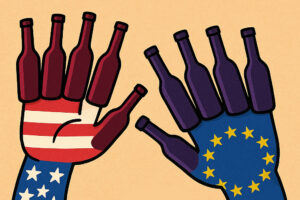It is fragmented, complicated, at the same time strong and capable of overcoming internal as well as external crises, and each time re-launching better than before. This is the picture, in a nutshell, of the Italian wine sector. And, even after two years of the Covid-19 pandemic, it can be confirmed healthier than many others, from the point of view of financial fundamentals such as profitability, capitalization and debt. These are the results of the study Banco BPM, one of the most important banking groups in Italy, carried out for the Consorzio del Brunello di Montalcino, which leads one of the most prestigious and healthiest Italian and international wine regions. It is difficult to generalize when talking about the Italian wine sector, which is made up of 310.000 wine companies, 46.000 wineries and a production value that the Studies and Research Department of Banco BPM has estimated at 11 million euros. Further, the top 30 companies together total a turnover of 3.9 billion euros (while the average per company has been estimated at 250.000 euros), and its offer is divided into 74 DOCG, 334 DOC and 118 TGI wines. The results of the survey have shown that the sector, as a whole, is definitely better performing than the Italian economy in general, even in the medium to long term.
If we consider one hundred the Gross Domestic Product (GDP) and the turnover of wineries in 2008, for example, in 2020 Italy’s Gross Domestic Product (GDP) was more or less the same as 12 years ago, while the wineries’ turnovers grew by 50 points. It is well known that exports have driven this growth, which, from 2000 to 2020, emphasized Banco BPM on ISTAT (Italian statistics institute) data, grew +14% in volume and above all, + 61% in value, at an average price of +69%. Of course, the core market concentration remains, considering that the first three markets - that is; the USA (23%), Germany (17%) and UK (11%) - alone account for more than 50% of the exported values (2020 data). The fact remains, in any case, that exports have partially offset the loss in domestic consumption, which saw per capita consumption drop from 50 liters in 2000 to 38 in 2020. Plus, daily wine consumers who were still the majority in 2008 (54.6% versus 45.4% occasional drinkers), today are instead the minority (42% versus 58%), and more than 45% of overall consumption is the prerogative of the over 55 age group (which represents 40% of the population). These trends today make the Italian wine sector alone worth 10% of the total of the Italian agro-food industry, added value at 19% on the National level, the net worth of Italian companies close to 41%, and financial debt at 32%. This is the average situation, while in some territories the situation is even better. Data show that the Brunello di Montalcino companies are clearly outperforming, since from 2006 to 2019, growth in added value increased from 39% to 42%, net assets soared from 37% to 63% and the reduction of financial debt went down from 45% to 23.4%.
“The global wine market is showing positive signs regarding values traded, while consumption is slowing down, which also indicates maturity in the market”, explained Michele Zanotto of the Studies and Research Division of Banco BPM, “and, in this context, Italy is offering a variety of wines to cover all categories, and has shown that it knows how to seize the opportunities arising from the variation in customer tastes. However, the domestic market is showing some signs of weakness. For instance, high fragmentation of workers, per capita consumption falling, fewer and fewer habitual consumers and mainly, the database is unbalanced towards the over 50s, the age group that consumes the most wine”. All of this has resulted, over the years, in a progressive income and financial improvement, which has made Brunello di Montalcino more solid, given it more liquidity and made it less risky than the sector in general as well as towards wines that belong to the different categories on the quality pyramid of Italian wine. “The key to understanding is the ability of companies to keep the added value high over time”, concluded Zanotto, “thanks to investments, capital strengthening and debt reduction that have allowed Brunello wine companies to remain excellent even on the financial indexes”. According to the president of the Consorzio del Vino Brunello di Montalcino, Fabrizio Bindocci, “the work Banco BPM has presented is extremely useful because it allows us to systematically measure the state of health of our companies and of the Montalcino vineyard. Furthermore, we must point out that it has seen its value increase over 4.000% in the last 50 years. The reaction of the Montalcino wine companies to the Covid-19 emergency”, added Bindocci, “has also been highlighted by +12% of state tax seals distributed in 2020, and even more so, in the first 8 months of 2021, Brunello producers requested +51% more state labels to place the product on the market. The number of state tax seals already distributed for the 2016 vintage, starting from the end of last year to today, have reached the equivalent of almost 8 million bottles. This means there is a “risk” of running out of stocks of the vintage as early as next November, when the Riserva will be presented at “Benvenuto Brunello”, which will be held this year in a renewed formula, from November 19th to 28th”.
Copyright © 2000/2025
Contatti: info@winenews.it
Seguici anche su Twitter: @WineNewsIt
Seguici anche su Facebook: @winenewsit
Questo articolo è tratto dall'archivio di WineNews - Tutti i diritti riservati - Copyright © 2000/2025








































































































































































































